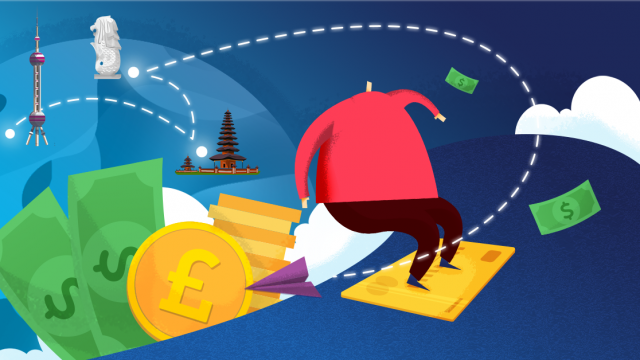People often ask: where does Tranglo position itself in the cross-border payments industry? For readers who are not familiar with the fintech and remittance industry, this can be a tricky question.
In fact, a colleague, who has been with the company for over 2 years, recently dragged me into a meeting room to ask about our products and processes, and what exactly does the company do. I spoke for almost 2 hours. But I digress.
In my first article, I talked about the evolution of cross-border payments. You would remember the middleman who connects and delivers payments from the sender to the beneficiary. You’d also remember that Tranglo is that middleman.
In this article, I will talk about the two middlemen in our industry, their key difference, our market share and our unique market position.
What’s the difference between Tranglo and our partners?
Imagine you’re a fruit seller. There are demands for exotic fruits not found in your locality, so you will need to source for suppliers.
Problem 1: Different exotic fruits in different countries require you to establish a partnership with a supplier for a particular fruit. That is not only time consuming but costly.
Problem 2: Fruit supply and demand changes all the time. What if you had ordered too much? Or if the supply can’t meet the demand of your customers?
Now, imagine linking up with a global supplier with quick and reliable access to all the different types of fruit you want. Your orders are processed on demand, so there is no worrying about both under- and oversupply. Sounds good, right? In the cross-border payments industry, Tranglo is a global supplier that provides fruit sellers (consumer-facing partners) with international payment services (fruits).
Target audiences
Most of our partners focus on serving the end consumer. This is strictly our own observation in the cross-border payments industry that we are a part of. End consumers are people like you and me who buy a product or use a service. These companies deal directly with the ultimate sender. They perform compliance and security screening, collect the fund, payment instruction and charge a fee. They then relay this to a business-facing payments aggregator like Tranglo.
Tranglo focuses on helping these companies complete cross-border transactions, making sure payments reaches their intended recipients. We don’t deal with end consumers, but there are exceptions (I will talk about this in a later article).
There are certain benefits to using third-party payments specialists for cross-border transfers instead of traditional intermediaries like banks or local financial institutions. In short, companies like Tranglo lower the entry barriers. They help their business partners consolidate funds in one place and handle the currency conversions that occur in an end-to-end payment process. All businesses want to start doing business as quickly as possible. Hence it makes more sense to tap into an existing network than build their own.
Tranglo’s cross-border payments market share
According to World Bank estimates, remittances to the East Asia and Pacific region were projected at USD131 billion in 2020, a fall of about 11% due to COVID-19.
So where exactly does Tranglo stand in the cross-border payments industry? The easiest way to explain is this: 3% of the total remittances in the region went through us in 2020. Based on our reports, we helped send the most money to the Philippines, Indonesia and Vietnam. There are plans for at least 30 new collaborations in 2021, so the number is expected to rise.
The World Bank report also said the average cost of sending USD200 to the region increased slightly to 7.1% in the third quarter of the same year, with the Philippines being the least expensive country to send money to, at an average of 2.5%. The United Nations Sustainable development goal “commits, by 2030, to reduce to less than 3% transaction costs of migrant remittances”.
Intergovernmental collaboration, global outreach and partnerships have contributed significantly to the lowering of the remittances costs to the Philippines, but more needs to be done if the other payment corridors were to achieve the SDG.
To this end, the recent Tranglo and Ripple partnership will give our partners a distinct advantage by eliminating the need for prefunding through ODL, thus increasing their working capital. These businesses can then translate such savings back to end consumers by lowering their fees.
Final thoughts
Tranglo is uniquely positioned as a global money transfer operator that helps connect global cross payments to Southeast Asia and the Pacific. This regional pivot helps us achieve our business goals and, most importantly, stay self-sustainable. It also allows us to focus on lowering remittance costs through innovations and collaborations, like the aforementioned one with Ripple.
A Tranglo cross-border partnership can transform business payments with flexible payouts. Contact us today to get a professional consultation at no charge.







